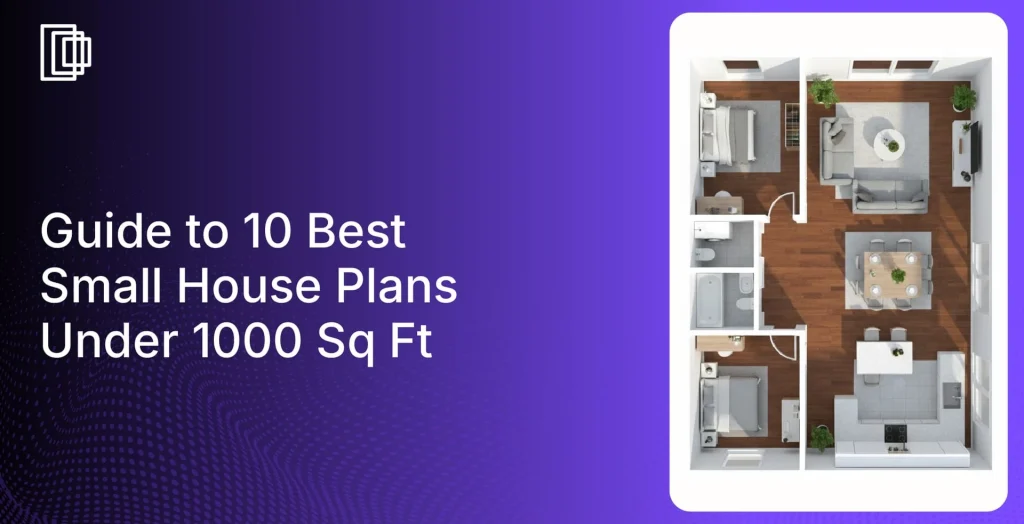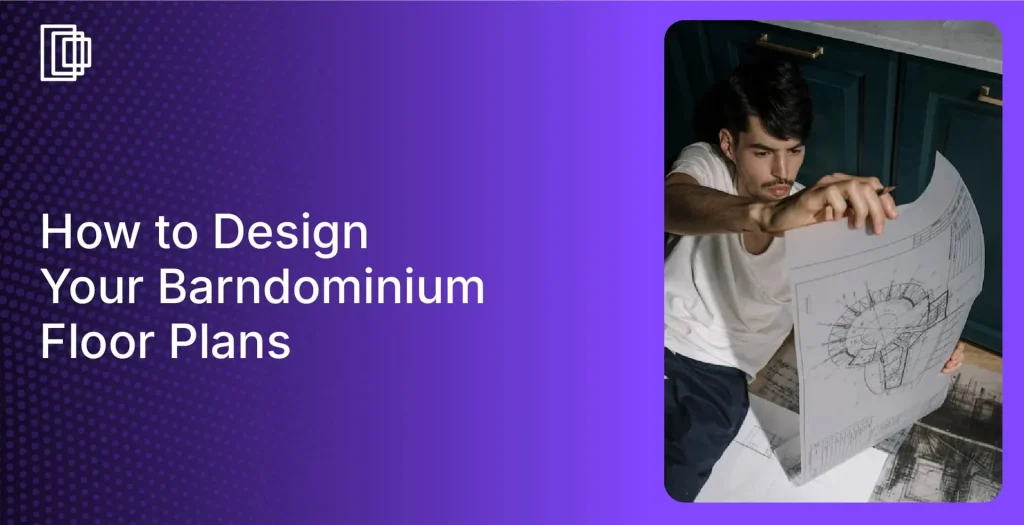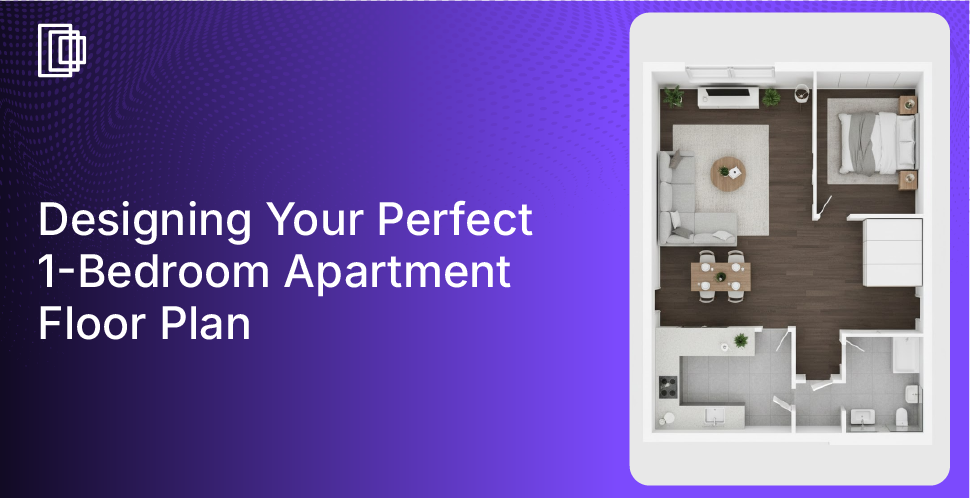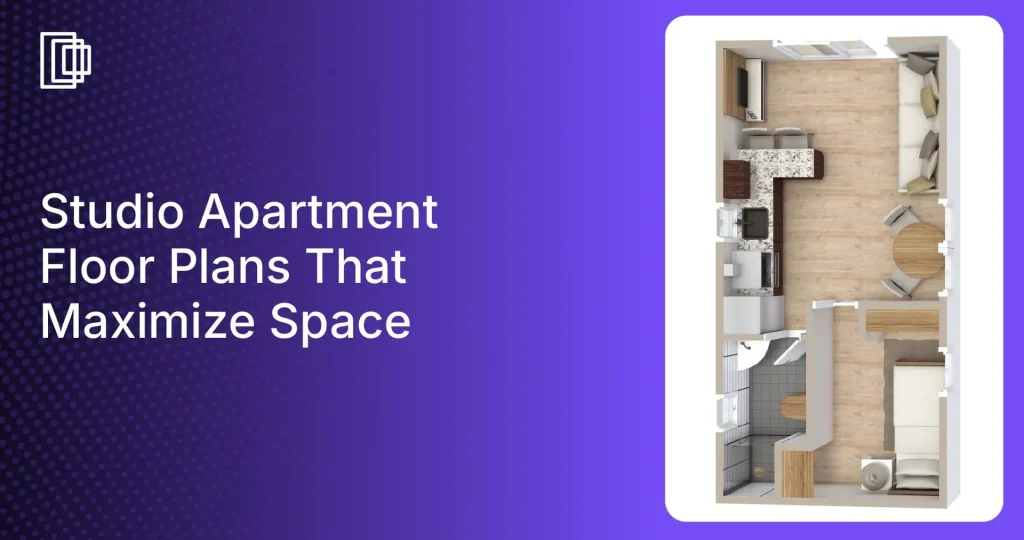Understanding the ideal average bathroom size is crucial whether you are building a new home or renovating an existing one. The dimensions of your bathroom directly impact its functionality, comfort, and the overall value of your property. Getting this right ensures you have enough space for essentials without feeling cramped.
From a compact powder room to a luxurious master suite, each type of bathroom serves a different purpose and has a unique set of requirements. Knowing the average size of a bathroom helps you allocate your floor plan effectively, ensuring every square foot is used to its full potential for a comfortable and practical design.
This guide will walk you through the various bathroom types, their typical dimensions, and the key factors you need to consider. We will explore everything from a standard bathroom size to an opulent master bath, helping you make informed decisions for a space that is both beautiful and highly functional.
What is the Average Bathroom Size?
The average bathroom size varies significantly depending on the type of bathroom and the home’s overall square footage. To help you plan your space, here are some key dimensions and common sizes you should know before starting any design or remodeling project.
- The average size of a bathroom in a typical US home ranges from 40 to 100 square feet, providing a balance between functionality and comfort.
- A standard full bathroom is typically about 40 square feet, with common dimensions of 5 feet by 8 feet.
- Half bathrooms, or powder rooms, are much smaller, generally measuring around 20 square feet.
- The master bathroom size is considerably larger, often falling between 100 and 200 square feet in modern homes, allowing for more luxurious features.
- For accessibility, ADA-compliant bathrooms require a minimum of 56 by 60 inches to ensure enough space for wheelchair maneuverability.
Read also – Average Bedroom Size
Common Bathroom Size Layouts
The average bathroom size layout depends on functionality requirements and available space. Most residential bathrooms fall into specific size categories that balance practicality with comfort.
Small Bathrooms (15-36 square feet)
- 3’ × 5’ = 15 square feet (sink and toilet only)
- 3’ × 6’ = 18 square feet (sink and toilet only)
- 4’ × 4’ = 16 square feet (sink and toilet only)
- 4’ × 6’ = 24 square feet (sink, toilet, and small shower possible)
- 6’ × 6’ = 36 square feet (sink, toilet, and standard shower)
Medium Bathrooms (49-72 square feet):
- 7’ × 7’ = 49 square feet
- 9’ × 6’ = 54 square feet
- 6’ × 10’ = 60 square feet
- 9’ × 7’ = 63 square feet
- 8’ × 8’ = 64 square feet
- 6’ × 12’ = 72 square feet
- 9’ × 8’ = 72 square feet
Large Bathrooms (100+ square feet):
- 10’ × 12’ = 120 square feet (typical master bathroom size)
- 12’ × 12’ = 144 square feet (luxury master bathroom)
- 14’ × 16’ = 224 square feet (premium master bathroom suite)
Important Stats to Know About Bathroom Sizes and Dimensions
Before you begin your renovation, it helps to be familiar with some key statistics related to bathroom design. These numbers provide a benchmark for planning your space, understanding costs, and recognizing what adds value to your home. Knowing these details will help you create a functional and valuable space.
- Standard Full Bathroom: A typical full bathroom is around 40 square feet (5′ x 8′) and includes a toilet, sink, and a tub/shower combination.
- Master Bathroom: The master bathroom size often ranges from 100 to 200 square feet, creating room for double sinks, separate tubs, and showers.
- Powder Room: These are usually 20 square feet or less, which is enough for a toilet and a small sink.
- ADA-Compliant Needs: An ADA-compliant toilet area must be at least 60 inches by 56 inches to accommodate wheelchair users.
- Fixture Sizes: A standard bathtub is 60 inches long by 30–32 inches wide, a typical shower is 36 by 36 inches, and a single vanity is 24–48 inches wide.
- Return on Investment: A bathroom remodel can offer a 60% to 70% return on investment, making it a smart upgrade for homeowners.
- Future Trends: Over 50% of homeowners are now considering bathroom upgrades to create larger luxurious spaces.
Understanding Bathroom Types
The average bathroom size varies significantly across different bathroom types, each serving specific functions and space requirements. Homeowners should consider these distinctions when planning renovations or new construction.
- Design for function first, then aesthetics
- Consider door swing and fixture clearances
- Plan adequate storage for each bathroom type
- Ensure proper ventilation regardless of size
Master Bathroom or Primary Bathroom Sizes
Often the most opulent and biggest bathroom in the home, the master bathroom, is an en suite bathroom attached to the master bedroom. In newer homes, a typical master bathroom occupies an area ranging from 115 to 210 square feet. The master bathroom in older houses was considerably smaller and used to occupy a modest 75 to 100 square feet.
A typical master bathroom design has room for the toilet, a bathtub, a shower stall, and a double sink. To dial up the grandeur, you can opt for free-standing sculpted bathtubs, brass fixtures to add a touch of warmth or marble wall finishes that are a time-tested classic.
Read also – 14 Best Bathroom Remodeling Ideas
Image Credit: pinterest.com
Depending on the size, the owners can also choose to implement additional features and fixtures such as a fireplace, lounge area, or chandelier.
More recently, master bathrooms or master bedrooms have been retitled as primary bathrooms or primary bedrooms to move away from primitive and negative constructs of a “master” and “ownership” that are not sympathetic in these modern times.
Image Credit: tamifaulknerdesign.com
Full-Bathroom Sizes
The full-bathroom is a highly value-boosting and versatile style that can be incorporated into even tight-knit spaces. A full bathroom has all the features of a master bathroom, such as the toilet, shower, bathtub, sink, and shower. The difference is that the shower area may or may not be in combo with the bathtub. This makes it popular in metropolitan cities where the space is premium.
Read also – 15 Common Bathroom Design Mistakes To Avoid
Image Credit: architonic.com
Most mid-priced homes tend to have at least one full bathroom. Many homes find it easy to combine the bathtub and the shower into one since the plumbing is confined to one wall, thus lowering the construction costs. These kinds of bathrooms occupy around 40 square feet on average.
A full bathroom situated between two rooms and accessible from both rooms is referred to as a “Jack-and-Jill” bathroom. Often shared between siblings, this style is a perfect space and resource saver, thus avoiding the need for separate showers!
Image Credit: pinterest.com
Half-Bathroom or Powder Room Sizes
A half-bathroom or powder room is usually located next to the living area of the house. It’s often a small space housing only a toilet and a sink to entertain daytime guests. The concept of a powder room is to provide guests or visitors with an easily accessible toilet and bathroom vanity to freshen up while keeping the rest of the house private. They are easily the smallest bathroom in the house.
A typical half-bathroom is 3 feet wide, around 8 feet long, and about 20 square feet on average. Older homes have powder rooms as small as 11 square feet or around a square meter.
Read also – 15 Best Small Bathroom Design Ideas To Stylish Your Bathroom
Image Credit: pinterest.com
A power room is also the second bathroom in some homes. We may also find powder rooms fitted in areas like the basement, especially if they were added later as an extra addition.
As a sound designer, you can make the powder bathroom decadent and help inject a little fun personality into the space! Since it’s the bathroom that will be frequented by outsiders, it makes sense to up the luxury quotient and renders it stylish and visually appealing.
Light a few scented candles or incense sticks around, pick out a distinguished vanity mirror and douse the room in captivating lights to guarantee that guests leave the powder room only reluctantly!
Image Credit: pinterest.com
Three-Quarter Bathroom Sizes
In typical homes, a three-quarter bathroom acts as a replacement for a full bath. This bathroom usually does away with the bathtub and has room only for a standing shower cubicle. A 36-square feet bathroom with a 6 feet by 6 feet configuration can be considered the most economical size.
These bathroom styles are popular guest bedroom additions since they usually require minimum storage spaces. These bathrooms house a vanity, shower, and toilet with enough space to move around comfortably.
Read also – 20 Best Bathroom Decor Ideas To Makeover Your Bathroom
Image Credit: pinterest.com
Finally, the average size of the three-quarter bathroom will also be impacted by the total floor space of the house and the number of additional bathrooms in the place. For instance, the three-quarter bathroom style has recently also gained popularity in modern homes with large bathrooms, quickly replacing full bathrooms as guest bathrooms. This is especially true since showers are considered less wasteful than baths as people move toward more sustainable living.
Image Credit: pinterest.com
Quarter-Bathroom Sizes
If a half-bathroom holds two of the standard bath fixtures, a quarter bathroom is a small space that has only one fixture, most often than not a toilet. Thus, a quarter-bathroom is also called a utility toilet. These are typically found in basements of older homes.
Read also – How To Maintain Your Bathroom Cabinet?
Image Credit: Pinterest.com
Nowadays, these bathrooms are popular value additions people make to their existing layouts. Just like the powder room, it serves as an alternative for guests or handymen who need not wander around the more private spaces of the home in search of a washroom. These smaller bathrooms tend to be very compact and are just 5 to 10 sq. feet. in size.
Image Credit: rojgaraurnirman.in
ADA Bathroom Size and Standards
As a designer, it’s our responsibility to ensure bathrooms should be accessible to all, including disabled and differently-abled persons. Hence, the American Disabilities Act (ADA) has set specific rules for designing the bathrooms to be used by such individuals.
You would typically see ADA-approved bathrooms in commercial and industrial buildings. Including one in a typical home can benefit a disabled or ageing person who stays or visits regularly.
Read also – 15 Best Master Bathroom Design Ideas
Image Credit: homeimprovementcents.com
You need to make sure that the floor plans have abundant space for movement and a turning radius for wheelchairs unhindered by the bathroom door, the toilet or the washbasin. It is also crucial to keep in mind to install fixtures at a relatively lower height than other bathrooms, as specified.
A proper ADA-compliant half bathroom occupies around 40 square footage. Depending on the disability of the person using them, you can have various configurations for different types of toilets.
Image Credit: dimensions.com
Jack and Jill Bathroom
Jack and Jill bathrooms average 60-80 square feet and feature entrances from two separate bedrooms. This efficient design allows two bedrooms to share one bathroom while maintaining privacy from the rest of the house.
These shared bathrooms typically include double vanities to accommodate multiple users. Many Jack and Jill configurations include compartmentalized toilet and shower areas that can be used independently.
The average size of a bathroom in this category must balance adequate space with efficient layout. Proper door placement and locking mechanisms are essential to ensure privacy between both bedroom users.
Image Credit: Pinterest
Bathroom Fittings & Sizes
Now that we have covered all the different bathroom types and their average sizes, it’s time to move on to the more exciting parts of designing a bathroom. Below are some of the most common and essential elements that make a bathroom and their average sizes.
1. Countertop & Sink Dimensions
The stunning varieties of designs and materials available in countertops and sinks can burnish up bathrooms of any size and shape. Switching up the countertop from royal Calcutta marble to Moroccan plaster can instantly breathe new life into the bathroom remodel. The sink area can become the bathroom’s focal point with just a little awareness.
In the case of a small bathroom, you fit in a pedestal sink that takes up very little floor space. The standard height of a countertop surface from the floor is kept between 34″ to 36″. While the minimum length of the countertop to fit one sink is at least 30″, a double vanity would require 5 feet at least.
Lastly, its depth can be anywhere between 22 inches to 24 inches. The options of sinks are varied from modern and contemporary to rustic. A wall mount sink exudes ethereal minimalism, while an under-mount basin will let your counter be the hero and run seamlessly across. Opt for a countertop style if your basin is an exceptionally striking one.
Read also – 21 Best Kitchen Counter Decor Ideas
2. Standard Toilet (WC) Dimensions & Clearances
A standard-size toilet is one of the most consistent elements in all bathroom types because they are based on ergonomics and never really vary by much. The choice you would need to make, depending on the bathroom size and your client’s preference, is between a floor-mounted unit and a wall-mounted one.
After picking your preferred water closet, ideally, you will need a minimum of 30 inches free in front of the commode. If one follows the above measurements, the toilet can be efficient. The advancement in sanitation and hand-free technology in bathrooms and toilets is laudable. The options are endless, from the high-end Veil dual-flush toilet that’s ADA compliant to the famed Toto’s Washlet C5.
Add-ons such as a bidet, a toilet paper holder or a plush foot mat can make the experience more comfortable. Finally, for a toilet that stays fresh, don’t forget to give the air fresheners Bustle swears by a try!
Read also – 10 Best Bathroom Design Apps and Software
3. Shower Enclosure Dimensions
The shower area is a niche where you can let your imagination run wild!
If your clients are looking for a shower enclosure that’s relatively light on the pocket, you can install a ready-made cubicle. However, if you are lucky enough to get to design a walk-in shower area, toughened glass panels are just the tip of the iceberg. From patterned tiles and fluted glass to Corton steel panels and curtains, your shower cubicle can look simply stunning with just a few touches.
Now, let’s take a look at the basic shower sizes. A square-shaped shower requires a minimum size of 3 feet by 3 feet, while a rectangular one may be 3 feet by 4 feet. The height of the overhead showerhead remains consistent for all bathrooms at 6 feet 6 inches from the floor level. The clean finish of showerheads like the Katalyst by Kohler lends sleek air to your bathroom and cutting-edge technology.
Read also – 6 Best Bathroom Lighting Ideas
4. Standard Bathtub Dimensions & Clearances
Bathtubs have always been a sign of abundance and luxury, helping one soak all the troubles away. A typical tub would occupy an area of 32 inches by 60 inches and be 18 inches in height. The minimum free space required in front of a bathtub is 21inches.
All bathroom fixtures of the tub should be installed at 33 inches from the ground for easy access. The best way to buy a bathtub is to sit inside it and know whether it is comfortable to use or not. Once installed, a bathtub is very cumbersome to replace, so it’s better to be sure than sorry!
However, these are used more as a guideline since the designs of bathtubs today far supersede these dimensions. From a classic claw-foot to bathtubs carved out from a single, solid stone, like sandstone, or moonstone. Granite, etc., or the Japanese-style soaking tubs, all take the bathing experience to a whole new level.
5. Bathroom Door Sizes & Clearances
The bathroom door should have a minimum width of 30 to 33 inches for unhindered passage. In the case of space crunch, you can go as low as 28 inches. As a rule of thumb, the swing of the bathroom door should never hit the vanity or the toilet while opening.
Factors Influencing Bathroom Dimensions
When planning a bathroom, several key factors determine the optimal average bathroom size for your specific needs. These considerations range from purely visual elements to practical requirements and budgetary limitations. Understanding how these factors interact helps homeowners make informed decisions about bathroom dimensions, fixture selection, and overall layout planning.
Aesthetic Considerations
- Aesthetics in bathroom design can evoke feelings of comfort and beauty, influencing how a space is perceived and used.
- Updating fixtures, such as a shower head or sink, can enhance the aesthetics of a bathroom while maintaining its existing size and layout.
- High-end materials can be incorporated into bathroom remodeling to create a more luxurious feeling without altering the size of the space.
- A complete remodeling project can significantly change the look of a bathroom while preserving its original dimensions.
- Engaging professional home services for cosmetic updates can lead to a fully remodeled bathroom within a few months.
Functional Needs
- A functional bathroom layout prioritizes proper sizing, zoning, movement, flow, and positioning of fixtures to enhance usability.
- Ensuring privacy for the toilet area is an important consideration in creating an effective bathroom design.
- Incorporating sufficient storage for toiletries and linens is crucial for maintaining organization and accessibility in the bathroom.
- The placement of essential fixtures such as the toilet, sink, and shower/tub should be prioritized to optimize space and functionality.
- The minimum size for an accessible bathroom is around 60 square feet to facilitate wheelchair maneuverability, highlighting the importance of space in meeting functional needs.
Budget Constraints
- Your budget can affect both the standard bathroom size and the types of finishes and fixtures you can include in the remodel.
- Larger bathrooms typically incur higher costs associated with materials and labor for flooring, plumbing, and fixtures.
- The average cost of a bathroom remodel ranges from $6,000 to $25,000, influenced by the size of the bathroom and the level of customization desired.
- Investing in a well-designed bathroom can enhance your home’s resale value, as bathrooms are estimated to account for 10–20% of a homes overall value.
Lifestyle Requirements
- The average residential bathroom size in the United States typically ranges from 40 to 100 square feet, influencing both daily routines and overall comfort in the space.
- A well-designed bathroom, particularly a master bathroom, can significantly enhance a home’s appeal and is estimated to account for 10-20% of a homes resale value.
- Standard bathrooms, often around 40 square feet, are designed for functionality while accommodating the needs of households with limited space.
- Three-quarter bathrooms, which include a shower, toilet, and sink, generally have an average size of 35 to 40 square feet, making them practical for secondary or guest use.
- The design of ADA-compliant bathrooms, with minimum dimensions of 60 by 56 inches, ensures accessibility and independence for individuals with mobility challenges, highlighting the importance of thoughtful layout in meeting diverse lifestyle requirements.
Tips for Maximizing a Small Bathroom
Making a small bathroom feel spacious is all about smart design choices. With the right strategies, you can create a room that is both functional and feels open and airy, proving that you do not need a large footprint to have a beautiful bathroom.
- Strategic Use of Mirrors and Lighting: A large, well-placed mirror can instantly make a room feel bigger by reflecting light and creating an illusion of depth. Combine this with layered lighting, like vanity sconces and an overhead fixture, to eliminate shadows and open up the space.
- Choosing the Right Fixtures: Opt for space-saving fixtures like a wall-mounted toilet or a pedestal sink to free up valuable floor space. A clear glass shower door also creates a more open and seamless look compared to an opaque shower curtain.
- Smart Storage Solutions: Think vertically to maximize storage. Tall, narrow shelving units, recessed medicine cabinets, and over-the-toilet storage are excellent for keeping clutter off the countertops without taking up precious room in your layout.
- Color Palette and Tile Choice: Use light and neutral colors on the walls to make the room feel brighter and more expansive. Choosing large-format tiles for the floor and walls can also trick the eye into seeing a larger area due to fewer grout lines.
Before you start your small-space remodel, use a design software like Foyr to test your ideas. You can easily convert your 2D plans into interactive 3D designs and then drag and drop items from an extensive library of pre-made 3D models, textures, and accessories. Try different layout combinations and produce high-quality, photorealistic renders in minutes to finalize your choices confidently, ensuring every inch is used effectively.
Conclusion
An excellent designer turns a utilitarian space like a bathroom into an exquisite experience. Along with the guidelines above, exceptional lighting, perfect accessories, and capital fixtures and materials will take a bathroom design to the next level.
However, while relying on instincts and client feedback are helpful routines, a 3D model and render of the area before implementation ensures zero snags and an impeccable finish.
While the process and choices that go into 3D modeling may seem overwhelming, software such as Foyr Neo is your best bet! You can choose from an extensive library of pre-made 3d models, textures, and accessories to make an accurate visual of the proposed bathroom to discuss with your clients.
You can try out different layout combinations and produce high-quality, realistic renders in minutes to aid your design journey. You can also sign up for a 14-day free trial to try out and see how best Foyr Neo can help you.
FAQs
What is a standard bathroom size?
A standard bathroom size is approximately 40 square feet, typically in a 5’ × 8’ configuration. This average size of a bathroom accommodates essential fixtures including a toilet, sink, and combination tub/shower. Standard bathrooms efficiently utilize space while providing all necessary functions for daily use.
Is a 5 by 7 bathroom too small?
A 5’ × 7’ bathroom (35 square feet) is not too small for a full bathroom. This size falls slightly below the average bathroom size, but can comfortably fit a toilet, sink, and shower/tub combination with careful planning. Using Foyr’s design tools, you can test various layouts to maximize functionality in this compact space.
Is 8 feet wide enough for a bathroom?
Eight feet is sufficient width for most bathroom types. An 8’ wide bathroom allows for comfortable placement of standard fixtures and adequate clearance for movement. This dimension exceeds the average size of a bathroom in terms of width, providing flexibility for various layout options and fixture arrangements.
What is a good size for a small bathroom?
A good size for a small bathroom ranges from 30 to 40 square feet. These dimensions allow for essential fixtures while maintaining adequate clearance. Though smaller than the average bathroom size, spaces of 5’ × 6’ or 6’ × 6’ can function well with proper fixture selection and strategic layout planning.
What is a good size for a master bathroom?
A good size for a master bathroom ranges from 100 to 150 square feet. This exceeds the average size of a bathroom and provides ample space for luxury features like double vanities, a separate shower and tub, and a private toilet area. Using Foyr’s visualization tools, you can explore various layouts to maximize this generous space.
What is the ideal bathroom size?
The ideal bathroom size depends on specific needs and household composition. For a primary bathroom, 120-150 square feet offers excellent functionality and comfort. Standard bathrooms function well at 40-60 square feet, while powder rooms need only 15-20 square feet. The average bathroom size should align with its intended use and desired features.






















